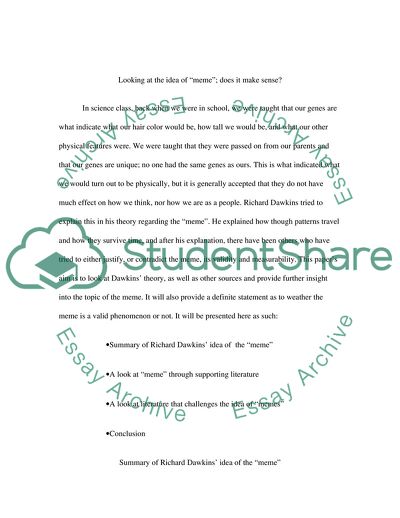Cite this document
(The Idea of Meme Literature review Example | Topics and Well Written Essays - 2250 words, n.d.)
The Idea of Meme Literature review Example | Topics and Well Written Essays - 2250 words. https://studentshare.org/sociology/1757023-does-the-idea-of-meme-make-sense
The Idea of Meme Literature review Example | Topics and Well Written Essays - 2250 words. https://studentshare.org/sociology/1757023-does-the-idea-of-meme-make-sense
(The Idea of Meme Literature Review Example | Topics and Well Written Essays - 2250 Words)
The Idea of Meme Literature Review Example | Topics and Well Written Essays - 2250 Words. https://studentshare.org/sociology/1757023-does-the-idea-of-meme-make-sense.
The Idea of Meme Literature Review Example | Topics and Well Written Essays - 2250 Words. https://studentshare.org/sociology/1757023-does-the-idea-of-meme-make-sense.
“The Idea of Meme Literature Review Example | Topics and Well Written Essays - 2250 Words”. https://studentshare.org/sociology/1757023-does-the-idea-of-meme-make-sense.


